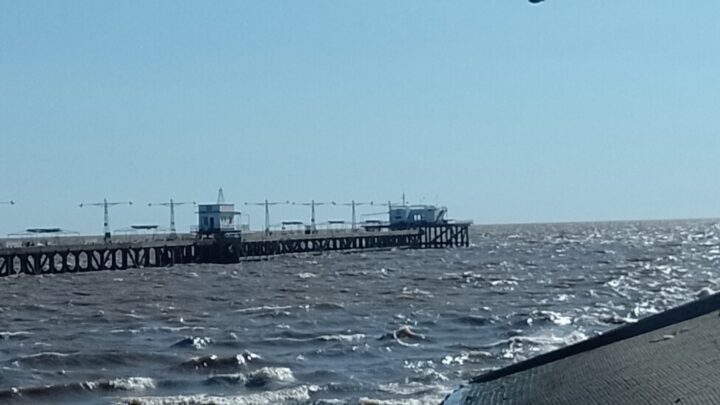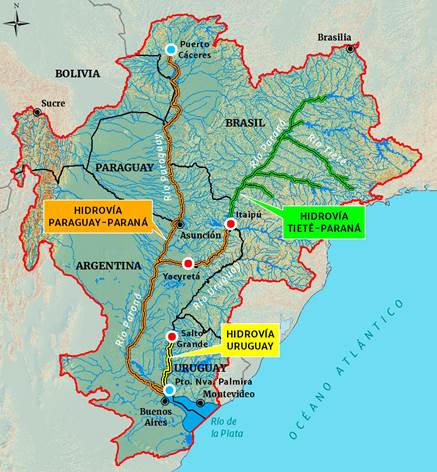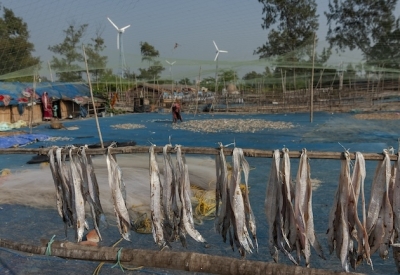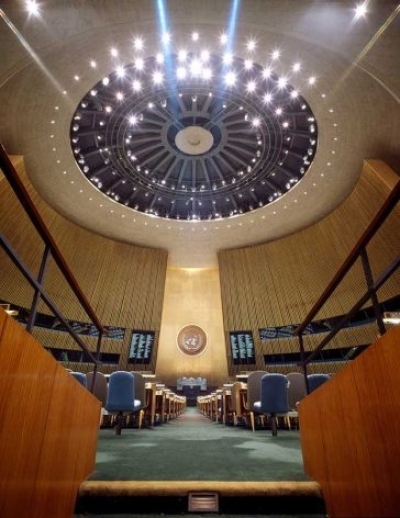BUENOS AIRES, Sep 29 (IPS) — In addition to being a majestic river — the second longest in South America after the Amazon — the Paraná River is the waterway through which a large part of the area’s primary goods are exported. Today, its economic importance has sparked an unexpected diplomatic conflict between Argentina and the countries with which it shares the basin.
Argentina’s decision to charge tolls to vessels on its stretch of the river led to a formal complaint from Paraguay, Brazil, Uruguay and Bolivia, which argue that the river corridor agreement signed by the five countries in 1994 stipulated that no taxes or tariffs could be imposed without the approval of all parties.
The Paraguay-Paraná Waterway River Transport Agreement created an Intergovernmental Committee as the political body that would ensure its operation and maintain it as a motor for the development of the Southern Common Market (Mercosur), established by Argentina, Brazil, Paraguay and Uruguay in 1991 and later joined by Bolivia.
Tension reached unprecedented levels with Paraguay, a landlocked country that owns a gigantic fleet of ships that carry millions of tons of soybeans and beef, the engines of its economy, to the Atlantic Ocean and often return with fuels, essential to supply a nation that produces no oil or gas.
"What is happening is very serious. Paraguay has invested three billion dollars in the last 10 years and has 2,500 transport barges, one of the largest fleets in the world," Andrea Guadalupe, vice-president in Argentina of the Mercosur-Southeast Asia Chamber of Commerce, which groups export companies from different countries, told IPS.
"It is not wrong for Argentina to charge a toll, because it carries out dredging and beaconing works that allow large ships to pass through the Paraná. But what is wrong is that it has not consulted the other countries and has taken a unilateral decision," she argued.
Paraguayan Pesident Santiago Peña announced that he would resort to international arbitration, saying that his country’s sovereignty was at stake, and stating: "Paraguay has no future without the free navigability of the rivers."
Although Peña denied that it was a reprisal, Paraguay announced this September that it would keep half of the electricity from the Yacyretá power plant located on the border between the two countries, on the Paraná River, which has an installed capacity of 3,200 megawatts.
Traditionally, although it is entitled to 40 percent, Paraguay has kept only 15 percent of Yacyretá’s energy and ceded the remaining 85 percent to Argentina, a country with a population of 46 million inhabitants, six times larger than Paraguay’s, which means it obviously consumes more energy.

Argentina says it invests between 20 million and 25 million dollars a year in dredging work on the Paraná, which in recent years has become more necessary due to a persistent drop in the water level, which has forced barges to carry less cargo and has increased the companies’ logistical costs.
"The situation is affecting the relationship between two countries that are brothers. Argentina’s attitude is not in line with the agreements, and Paraguay is a landlocked country that needs the river to connect with the world," Héctor Cristaldo, president of the Union of Production Chambers (UGP), which groups Paraguayan agricultural business chambers, told IPS.
Cristaldo said the main impact for Paraguay is in the supply of fuels used for agriculture and livestock and also for land transportation. "Paraguay has no trains; everything moves on wheels," he said.
The toll crisis escalated into open friction in early September, when a Paraguayan flagged barge heading north with 30 million liters of fuel was held up for several days by Argentine authorities who released it when it agreed to pay some 27,000 dollars in tolls.
The rate for vessels put into effect in January 2023 is 1.47 dollars per ton transported. It was set by the General Administration of Ports (AGP), the government agency that controls the Argentine section of the waterway.
The new toll drew a statement from the governments of Paraguay, Brazil, Bolivia and Uruguay, which expressed "special concern because it is a restriction on the freedom of transit" and asked Argentina to collaborate "to facilitate commercial transport, favoring the development and efficiency of navigation."

From Mato Grosso to the sea
The Paraná River, together with its tributary, the Paraguay River, form a waterway stretching almost 3,500 kilometers from Mato Grosso in west-central Brazil to its mouth in the Río de la Plata, which in turn flows into the Atlantic. The basin covers almost 20 percent of South America’s territory, and has an enormous biodiversity and a remarkable productive capacity. The lower section, from the central Argentine city of Rosario to the mouth of the river, has been dredged to allow trans-oceanic vessels to pass through, carrying millions of tons of agricultural products for export each year. In total, some 100 million tons of goods are transported through the waterway every year.
The work began in 1995, when Argentina granted its section under concession to a consortium formed by the Belgian maritime infrastructure giant Jan de Nul and the Argentine Grupo Emepa, to be in charge of dredging and signaling. Thus, the river was deepened from its natural 22 feet to 34 feet from Rosario — the country’s main agro-industrial center — to the mouth.
Further north, the waterway is only 12 feet deep, which only allows the navigation of barges, with which Paraguay and Bolivia export a major part of their soybean production, which is transferred to larger ships in Rosario.
The following year, the Argentine Ministry of Agriculture authorized the cultivation of transgenic soybeans, which would lead to a major expansion of the agricultural frontier and great pressure from agribusiness to deepen the dredging of the Paraná, which crosses the most productive area of Argentina, so that larger ships could enter.

Low cost transportation
"The Paraná was transformed into a waterway that began to fulfill a function analogous to the one played by the railroad until the first third of the 20th century: to facilitate the expansion of the productive frontier and to be a low-cost transit route," wrote geographer Álvaro Álvarez, vice-director of the Geographic Research Center of the public Universidad Nacional del Centro.
Álvarez maintains that the Paraná today is "a key infrastructure in the insertion of the region as a supplier of commodities into the international economy, a process through which industrial agriculture, mega-mining and hydrocarbon exploitation have been degrading ecosystems for decades, expelling populations from territories and affecting the health of communities."
One of the main questions about the waterway is that there are no studies of the environmental impact generated by the modification of the river and the constant traffic of large vessels.
Last year, the Argentine Association of Environmesntal Lawyers filed an injunction demanding environmental impact assessments, which is now being studied by the Supreme Court of Justice.
"The State presented a 30-year-old environmental impact study in the file. Since then there has been and there continues to be removal of thousands of tons of sediment from the riverbed, which in many areas is contaminated with agro-toxins from industrial agriculture, and it is not known how that impacts the contamination and the dynamics of the river," Lucas Micheloud, a member of the Association, told IPS.
"It is not a matter of adapting the river to the size of the ships, but of the ships adapting to the river," said Ariel Ocantos, a graduate in International Relations and member of the Ecologist Workshop of Rosario, one of the environmental organizations demanding greater citizen participation in the interventions carried out in the Paraná River.
"We made several requests for information to the government because we want to know if they are conducting environmental impact studies. There is very little information and we are demanding citizen participation, which is absolutely necessary," he said.






